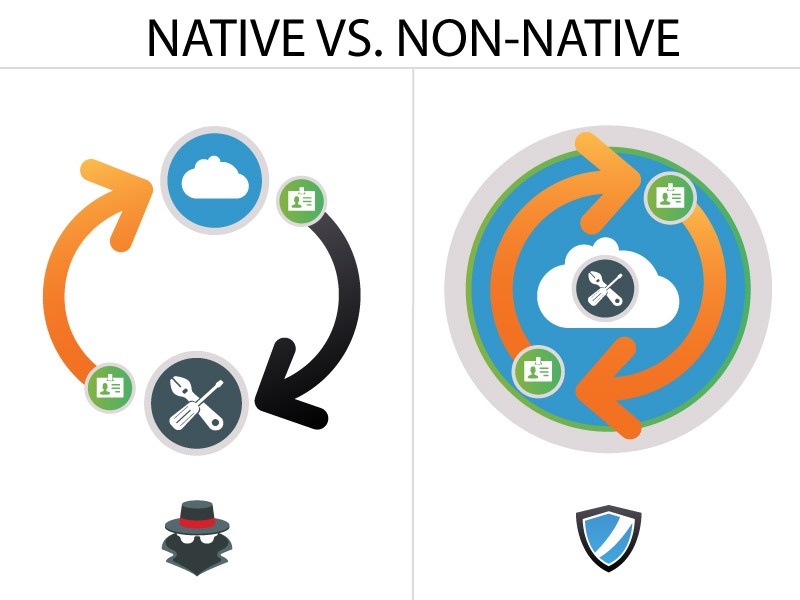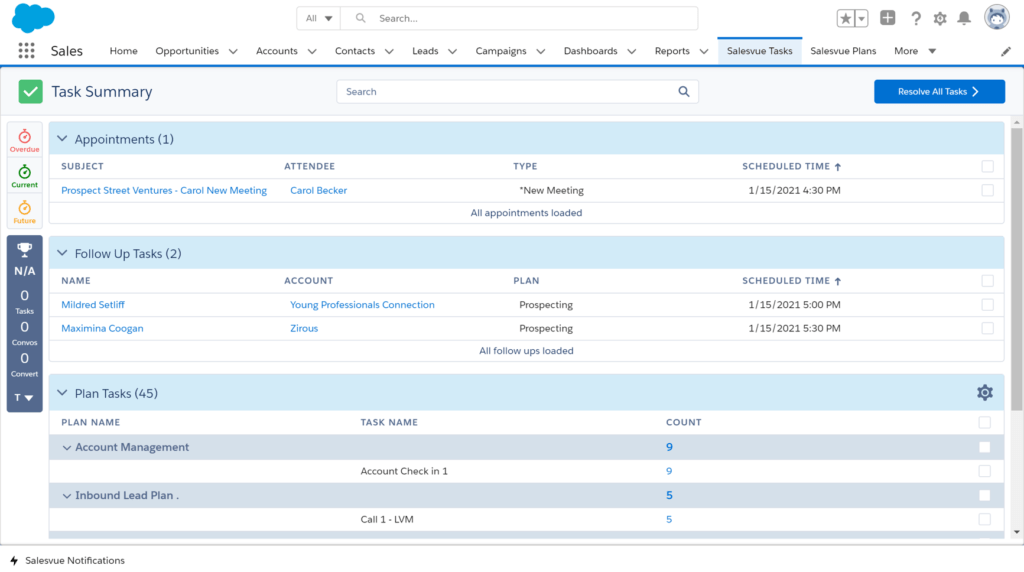Sales engagement platforms vs CRMs are all the buzz right now in the sales world. Every salesperson seems to be expected to know how to use these platforms, and sales leaders seem to be expected to know which ones to implement. However, while it’s known that they’re both important, it may not be obvious why or how to utilize them effectively. Establishing what each one does, how they work together, and the best partnership between the two can help position your sales team above the rest.
What is a CRM Platform?
Any salesperson, or truly anyone involved with business development nowadays, will tell you that one of the most important tools to have is a CRM platform. CRM, or customer relationship management, is a tool used to help manage relationships with current and potential customers. This is a tool that is used by sales teams to help streamline their communication with customers and organize information about them. Not only does a CRM help increase productivity, but it also gives key insights into who your market is.
Salesforce
With the recent boom in CRM, one company has stood out among all the rest and perhaps you already use it. Salesforce has long been the dominant player in the CRM space and has become synonymous with this technology. By becoming a leader in the industry, Salesforce has helped companies in a multitude of areas. Whether that be helping companies offer better customer support, identify potential leads, increase marketing campaign effectiveness, or increase sales’ win rate, Salesforce is an all-in-one tool helping sales teams smash their goals.
What is a Sales Engagement Platform?
A sales engagement platform is essentially a more tailored version of a CRM platform. While CRM platforms offer a whole range of functions, sales engagement platforms are focused on sellers and making their lives easier. By equipping your sellers with the proper tools, a good sales engagement platform will help make their efforts more effective and efficient.
These tools are used to help engage prospects and customers throughout the sales process. Often implemented by sales team leaders, this technology helps with a range of things such as lead generation, prospecting, automated emails, and offering sales cadences based on best practices and actionable insights.
There also seems to be dozens of sales engagement platforms to choose from. We took the liberty of coming up with all the key features and questions you should ask when choosing a sales engagement platform. With their popularity exploding right now, you may feel overwhelmed by all the options. However, the main piece to consider when picking a sales engagement platform would be whether it is native or not. What this means is does it live natively within the CRM, or is it a third-party platform that syncs with your CRM?
Sales Engagement Platforms vs CRMs
While both tools provide great value to a sales team, they must be used correctly. It’s not enough to just have one or the other. Trying to use a sales engagement platform without a CRM will not work and trying to use a CRM without a sales engagement platform would waste time and be inefficient. Here are some more reasons why these tools must be used in unison.
Sellers Have Their Own Processes
Without a sales engagement tool, it’s up to the sellers to determine how they should interact with prospects. I’m sure you know some sellers that still work like it’s 2005. Sticky notes everywhere, spreadsheets, and no structure whatsoever.
A sales engagement tool helps solve for this. So, rather than being given a CRM with a bunch of information and not knowing what to do with it, a sales engagement platform gives sellers consistent call scripts, email cadences, organization, and so much more. No longer will every seller on your team complete their day-to-day tasks in their own way. A sales engagement platform helps show them what needs to be done and helps them achieve that.
Data Doesn’t Get Updated
Without a sales engagement platform, it becomes cumbersome for sellers to keep data about prospects and clients updated in your CRM. Without combining the two tools, data can not only be lost while inputting into a CRM platform but forgotten to be put in all together. This leads to a lack of accurate reporting.
Using the data available in a CRM is a huge advantage for sales teams that do it effectively. By creating actionable insights from the data you have, everything becomes easier after that. However, by only having a CRM platform and not a sales engagement platform as well, there’s a risk the insights you take away from your data will not be accurate or tell the complete picture.

No Structure to Prospecting
With a sales engagement platform, you’ll have access to many prospecting tools to help you generate meetings and close deals. For example, with a sales engagement platform, your sellers will have access to common cadences, email templates, call scripts, and more. So, your sellers will not be relied upon to determine when to send an email, or frankly even what to say in it. They will be provided a list of tasks to complete for the day, and from there all they need to do is click send and hundreds of well thought out emails can go out in an instant. Without a sales engagement platform, you lose the opportunity for this ability.
Sellers Lose Track of Opportunities
The last thing a sales team leader wants to see happen is missed opportunities. By only using a CRM, the potential for prospects to be forgotten about or slip through the cracks is much higher than if a sales engagement platform is used as well. Without one, sellers may forget to reach back out to a prospect they’ve been talking to or may not remember a meeting they put on their calendar a couple of weeks ago.
However, with a sales engagement platform, all of this is automated. This takes the mental work on simple tasks out of the picture for sellers and allows them to focus on high-value tasks. Any meeting they set or prospect they contact will be automatically logged and a reminder will be put in front of them when the day comes.

How to Pick a Sales Engagement Platform
Referring back to earlier, you may remember how a key difference in sales engagement platforms is whether they are native or third-party platforms. We would suggest using a native platform, considering all the benefits that come along with it. Whether it’s because using a native platform provides a single source of truth, the lack of needing to sync data which allows for better accuracy, being able to limit your tech stack size, or many other things, there are countless reasons picking a native sales engagement platform is crucial.
Now, knowing a native solution is the way to go, the next natural question for most would be does Salesforce have a sales engagement platform? The answer...yes. There are native sales engagement platforms for Salesforce. But there is one that stands out above the rest.
Salesvue is the easiest to use and most powerful Salesforce native sales engagement platform. Built specifically to help enhance and get the most out of Salesforce, Salesvue offers users all the benefits of being a native platform, while also being more user friendly and robust than other options. Perfecting everything from reporting to cadence capabilities, Salesvue is the best sales engagement platform available for Salesforce users.
Summary
CRM platforms and sales engagement platforms differ greatly. While they help work towards the same goal of closing deals, they each perform different things to help you get there. CRM platforms, like Salesforce, are more focused on the organization of information and relationship management.
Sales engagement platforms help engage a prospect throughout the sales process. Together, they help with the efficiency and effectiveness of your sellers throughout the sales process. That’s why it’s vital to ensure these platforms work well for each other, and no other pairing works better than Salesvue and Salesforce.
Category
Subscribe to Funnel Vision
Get the latest and greatest right in your inbox






